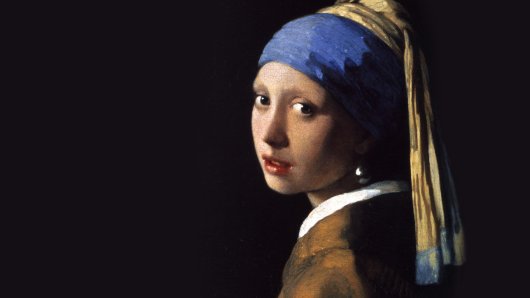Tracy Chevalier, the author of Girl with a Pearl Earring (1999), first saw the Johannes Vermeer painting that inspired her novel when she was 19-years-old. Struck by the colors, as well as the expression on said girl’s face, Chevalier stood in front of the painting for hours and bought a poster of it on her way out. It still hangs in her home 30 years later.
In a talk given at TEDSalon, Chevalier explains how she approaches museum-going — by breezing through galleries until a painting catches her eye and her storytelling instinct. Then, she stands before it, imagining what might have happened as the painter smudged acrylic onto canvas. It was this process that led Chevalier to write her best-selling book.
“We are wired to tell stories,” says Chevalier in her talk, in which she describes two other paintings that also set her brain ablaze with stories. “Why not apply that to looking at paintings?”
Chevalier isn’t the only one author to use a painting as a jumping-off point. In many ways, she is part of a genre. Below, more works based on iconic paintings, sketches and artists.
1. Lydia Cassatt Reading the Morning Paper, by Hariet Scott Chessman (2001)
Set in Paris in the 1880s, this work of fiction tells the tale of two sisters — Mary Cassatt, the painter, and Lydia Cassatt, her frequent model who often posed for paintings despite suffering from Bright’s disease.
2. The Girl in Hyacinth Blue, by Susan Vreeland (2000)
Only 35 Vermeer paintings have survived from the 1600s to the present day. In this book, Vreeland imagines a 36th, tracing it through the homes of its owners back to its origin.
3. I, Mona Lisa, by Jeanne Lakogridis (2006)
Set in politically and religiously explosive 15th century Florence, this novel imagines the woman in the famous Leonardo da Vinci painting as Lisa di Antonio Gherardin, a woman torn between her husband and a man who will kill him if she doesn’t marry him instead.
4. Sunday in the Park with George, lyrics by Stephen Sondheim and book by James Lapin (1984)
This award-winning musical, which debuted on Broadway in 1984 and was revived in 2008, is based on the pointillist masterpiece “A Sunday Afternoon on the Island of La Grand Jatte” by Georges Seurat. It even answers the question — what is a monkey doing in the painting?
5. Dancing for Degas, by Kathryn Wagner (2010)
This novel tells the story of the young ballerina who inspired Edgar Degas’ most famous paintings, and in the process delves into the fraught world of the Paris Opera at the turn of the 20th century.
6. The Da Vinci Code, by Dan Brown (2003). The action in this extremely popular thriller, later turned into a movie starring Tom Hanks, starts when a man is found murdered in the Grand Gallery of the Louvre, posed as Leonardo da Vinci’s Vitruvian Man.
7. Norman Rockwell’s Greatest Painting: a Novel, by Hollis Hodges (1988)
Based on a fictional Rockwell painting of six kids, this story unfolds when the children are reunited as adults at a party celebrating the work of art. Affairs and other entanglements ensue.
8. Sunflowers: A Novel of Vincent van Gogh, by Sheramy D. Bundrick (2009)
While this book is fiction, it was written by an art historian. Which lends some weight to the tale of a woman who falls for Van Gogh when he sketches her garden, only to have things unravel as he battles mental illness.
9. The Cezanne Chase, by Thomas Swan (1997). In this thriller, inspector Jack Oxby is hot on the trail of a perp who is systematically destroying all the existing portraits of Paul Cezanne, and killing anyone in his way. Part of a series, Swan’s debut Jack Oxby novel, The Da Vinci Deception, was released in 1990.

Comments (17)
Pingback: How to Get Inspiration for Your Creative Writing Ideas
Pingback: Art History Inspires Creativity - Heather Erickson Author/Writer/Speaker
Pingback: The Magic of Books & Paintings – Sarina Dahlan
Pingback: IID #66 – Final Major Project -8 – Tammy Chiu
Pingback: Girl with a Pearl Earring by Tracy Chevalier – Readers' High Tea
Pingback: Art
Pingback: Weekend Inspiration–Seeking Kindred Spirits | Painting Pundit
Pingback: GIRL WITH A PEARL EARRING— Book review | Pendown